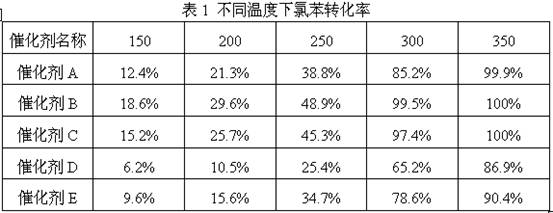Sulfur-resistant VOCs low-temperature catalytic combustion catalyst and preparation method thereof
A low-temperature catalysis and catalyst technology, which is applied in the field of resources and the environment, can solve the problems of catalyst chlorine poisoning, etc., and achieve the effects of enhancing reactivity, strengthening interaction, and inhibiting erosion
- Summary
- Abstract
- Description
- Claims
- Application Information
AI Technical Summary
Problems solved by technology
Method used
Image
Examples
Embodiment 1
[0026] A method for preparing a catalyst for sulfur-resistant VOCs low-temperature catalytic combustion is achieved through the following specific steps:
[0027] (1) Preparation of mesoporous iron-zirconium composite oxide
[0028]Stir and mix the ferric nitrate solution and the zirconium oxynitrate solution at room temperature for 10 minutes, add urea and CTAB and continue to stir for 25 minutes, then treat the resulting mixed solution at 85°C for 24 hours, centrifuge, wash, and dry in sequence, and then place it at 400°C Roasting for 6h to obtain a mesoporous iron-zirconium composite oxide; the ratio of the amount of iron nitrate to zirconyl nitrate is 0.5:1, and the amount of urea added is 10 times the total amount of iron nitrate and zirconyl nitrate , the addition of the CTAB is 6wt% of the total mass of ferric nitrate and zirconyl nitrate; the molar concentration of ferric nitrate solution is 0.2 mol / L, and the molar concentration of zirconyl nitrate solution is 0.4 mol...
Embodiment 2
[0039] A method for preparing a catalyst for sulfur-resistant VOCs low-temperature catalytic combustion is achieved through the following specific steps:
[0040] (1) Preparation of mesoporous iron-zirconium composite oxide
[0041] Stir and mix the ferric nitrate solution and the zirconium oxynitrate solution at room temperature for 20 minutes, add urea and CTAB and continue to stir for 35 minutes, then treat the resulting mixed solution at 95 °C for 12 h, successively centrifuge, wash, and dry, and then at 600 °C Roasting for 4h to obtain mesoporous iron-zirconium composite oxide; the ratio of the amount of iron nitrate and zirconyl nitrate is 2:1, and the amount of urea added is 20 times of the total amount of iron nitrate and zirconyl nitrate , the addition of the CTAB is 8wt% of the total mass of ferric nitrate and zirconyl nitrate; the molar concentration of the ferric nitrate solution is 0.4 mol / L, and the molar concentration of the zirconyl nitrate solution is 0.2 mol / ...
Embodiment 3
[0052] A method for preparing a catalyst for sulfur-resistant VOCs low-temperature catalytic combustion is achieved through the following specific steps:
[0053] (1) Preparation of mesoporous iron-zirconium composite oxide
[0054] Stir and mix the ferric nitrate solution and the zirconium oxynitrate solution at room temperature for 15 minutes, add urea and CTAB and continue to stir for 30 minutes, then treat the resulting mixed solution at 90 °C for 18 h, successively centrifuge, wash, and dry, and then in 500 °C Roasting for 5h to obtain mesoporous iron-zirconium composite oxide; the ratio of the amount of iron nitrate and zirconyl nitrate is 1:1, and the amount of urea added is 15 times the total amount of iron nitrate and zirconyl nitrate , the addition of the CTAB is 7wt% of the total mass of ferric nitrate and zirconyl nitrate; the molar concentration of the ferric nitrate solution is 0.3 mol / L, and the molar concentration of the zirconyl nitrate solution is 0.3 mol / L; ...
PUM
| Property | Measurement | Unit |
|---|---|---|
| concentration | aaaaa | aaaaa |
| concentration | aaaaa | aaaaa |
| concentration | aaaaa | aaaaa |
Abstract
Description
Claims
Application Information
 Login to View More
Login to View More - R&D Engineer
- R&D Manager
- IP Professional
- Industry Leading Data Capabilities
- Powerful AI technology
- Patent DNA Extraction
Browse by: Latest US Patents, China's latest patents, Technical Efficacy Thesaurus, Application Domain, Technology Topic, Popular Technical Reports.
© 2024 PatSnap. All rights reserved.Legal|Privacy policy|Modern Slavery Act Transparency Statement|Sitemap|About US| Contact US: help@patsnap.com









